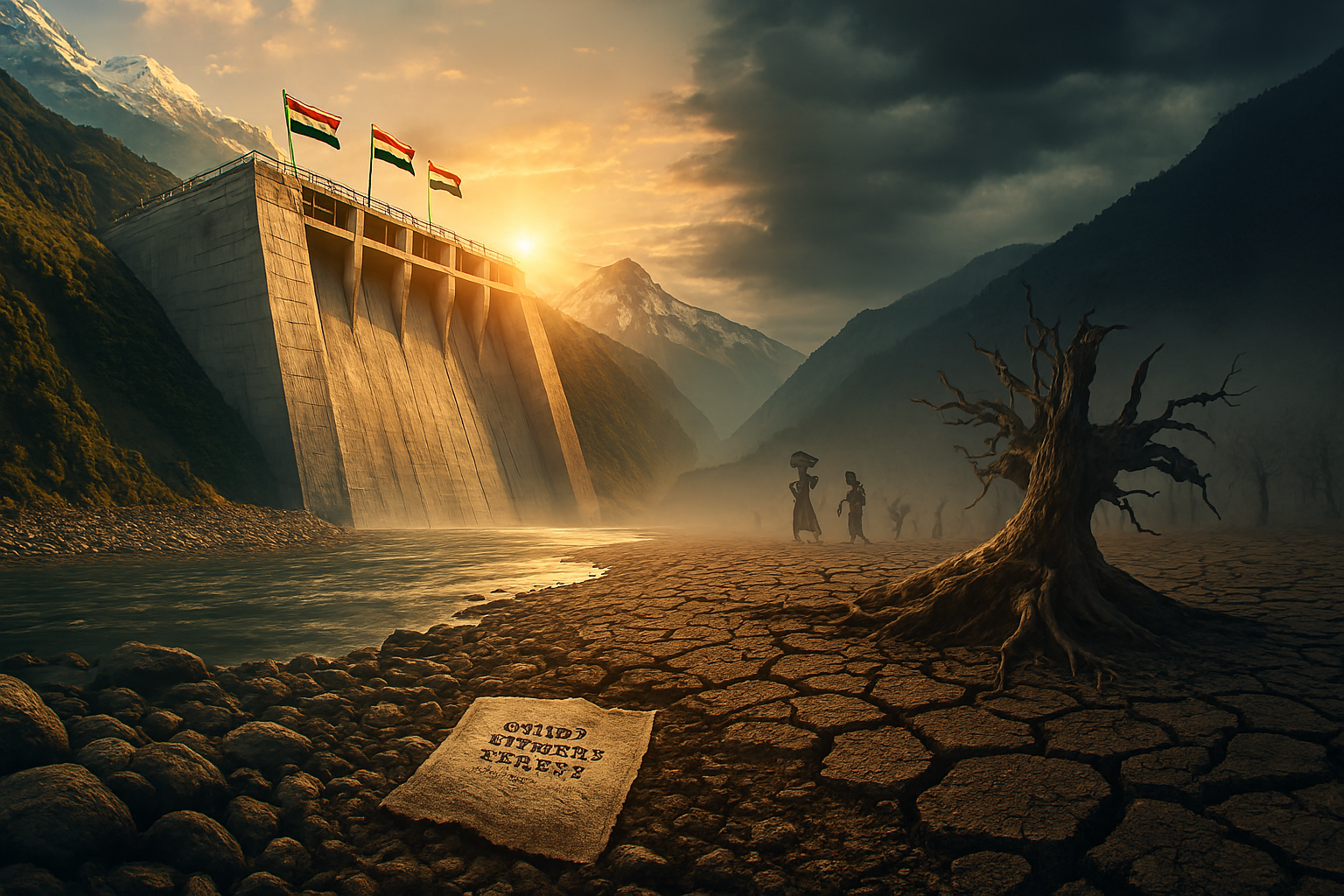Source: The Hindu Editorial (Adapted for Student Understanding)
Original Title: “Testing governance: On the Sawalkote Hydroelectric Project“
Date: October 14, 2025
Introduction: A Project with Dual Significance
The recent push for the 1.8-GW Sawalkote Hydroelectric Project on the Chenab river has become a crucial test of India’s governance. As analyzed by The Hindu, this project sits at the complex intersection of national security strategy and environmental responsibility. Its timing, following India’s suspension of the Indus Waters Treaty after the Pahalgam attack, gives it significant geopolitical symbolism that cannot be ignored.
The Strategic Rationale: Why Now?
The Union Ministries of Power and Home Affairs are strongly advocating for this project, emphasizing its strategic importance for several reasons:
- Geopolitical Signal: The project demonstrates India’s intent to fully utilize its rights over the western rivers (Chenab, Jhelum, Indus) following the IWT suspension.
- Procedural Freedom: Keeping the treaty in abeyance has removed international procedural constraints, allowing projects like Sawalkote to proceed faster.
- Strategic Autonomy: It represents India’s assertion of its water rights in response to security concerns from Pakistan.
The Environmental and Implementation Concerns
However, The Hindu highlights several critical concerns that cannot be overlooked:
- Cumulative Impact: The Chenab already hosts multiple projects (Dulhasti, Baglihar, Salal) in a “bumper-to-bumper” arrangement. Adding another large project risks compounded sediment loads and slope instability.
- Misleading Classification: Though called a “run-of-river” project, it will create a massive reservoir of 50,000 crore litres, functioning more like a storage dam.
- Implementation Risks: NHPC’s track record shows frequent schedule delays and cost overruns. The project cost has already increased by ₹9,000 crore.
- Inadequate Rehabilitation: Only 0.6% of total expenditure is allocated for rehabilitating 1,500 displaced families and diverting 847 hectares of forests.
The Bigger Picture: Long-term Implications
The editorial raises crucial questions about India’s international standing:
- By proceeding unilaterally, India risks its credibility as a treaty-abiding nation
- Pakistan has already challenged the IWT suspension’s legality
- Future negotiations might invite unwanted third-party scrutiny
- Strategic assertion must be balanced with ecological responsibility
Conclusion: The Way Forward
The Hindu suggests that true strategic wisdom lies in balancing security needs with environmental stewardship. India should:
- Conduct proper regional environmental studies
- Establish sediment management protocols
- Institutionalize data transparency through multilateral platforms
- Convert hydrological monitoring from a security risk to a confidence-building measure
The ultimate test will be whether India recognizes that national security and ecological responsibility are not opposing forces but reinforcing principles that must work together for sustainable development.
Key Takeaways:
- Complex Decision-Making: Major infrastructure projects involve balancing strategic, environmental and social considerations
- International Responsibility: Unilateral actions have diplomatic consequences in our interconnected world
- Sustainable Development: True security comes from balancing immediate strategic gains with long-term environmental stability
